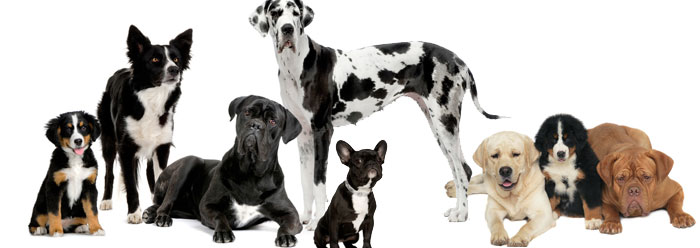Almost all new dog breeds have been established in the last few hundred years. Due to this fast genetic diversification, researchers have been investigating how “descent with modification” occurred so quickly in the dog genome.
Studies of the genomic differences between various dog breeds are yielding information at a faster pace than scientists’ abilities to interpret it. Nevertheless, some general trends are clear.
Eight researchers led by Joshua Akey, assistant professor of genome sciences at Washington University, examined DNA sequence data from ten dissimilar canine breeds. In their study that appeared on the cover of the January 19 issue of the Proceedings of the National Academy of Sciences, Akey’s team searched for tiny DNA differences that may specify the various breeds that can be recognized by sight.
Some of these, such as the differences that cause the wildly wrinkly skin of the Shar-Pei, appear to have been caused by mutations. And most of the breed-defining genetic features, whether caused by mutations or something else, seem to have been culled recently from an originally information-rich genetic pool.
A University of Washington news release stated that this study was an “effort to map canine genome regions that show signs of recent selection and that contain genes that are prime candidates for further investigation.”1 The authors do not yet know exactly which portions of the genome get mixed, preserved, or left behind when a new breed develops, nor how this process may occur. But they found “evidence that regulatory evolution has played a prominent role.”2
What is “regulatory evolution”? Most think of evolution as a process based on random events, not as one that is associated with some kind of regulatory activity. Perhaps it would have been more scientifically accurate to just call it “regulation.” Since all these dogs are still dogs, they have not undergone broad-scale evolution. By pairing the word “evolution” with “regulatory,” the researchers are begging the question by assuming as fact a conclusion that is not drawn from the data.
The PNAS study states that the dog breed genome “observations support the hypothesis that the most differentiated regions of the canine genome are enriched for targets of selection.”2 In other words, certain areas of the genome are much more susceptible to being selected out of the larger pool when a new breed is formed. Apparently, specific parts of the genome have been “rigged” to undergo sorting during selection.
Today’s 400 distinct dog breeds have been selected out of the dog kind in a short time period, and this differs from Darwinian evolution in at least two ways.
First, the selectable portion of genomic data is isolated from the rest of the genome.3 This area specifies which individual physical attributes, among the wide variety of possible visible dog features, are displayed in one particular dog. The non-selectable regions of the genome must therefore contain data that specify the core features and systems that make all dog descendants still dogs, regardless of their varieties.4
But these breeds form according to genomic regulations, not by the selection of unregulated, chance-based mutations. Those few mutations that have caused distinctive traits like wrinkled skin or stumpy legs likely arose within the selectable portions of the genome.
Second, because certain portions of the genome were set up to undergo selection, this kind of diversification is able to happen very quickly. This starkly opposes the long timeframes that Darwinian evolution has hypothesized for this much variation to occur.
Overall, establishing new dog breeds should not be referred to as “evolution,” since it does not primarily occur by selection of random tiny genome differences, but instead by selection of whole, ordered arrays of certain genomic segments. Dogs were created with the ability to maintain their core identity while also undergoing regulated changes, as their recent variations through selective breeding demonstrate.
References
- Gray, L. Dog genome researchers track paw prints of selective breeding. University of Washington News. Posted on uwnews.washington.edu January 14, 2010, accessed January 20, 2009.
- Akey, J. M. et al. 2010. Tracking footprints of artificial selection in the dog genome. Proceedings of the National Academy of Sciences. Published online before print January 11, 2010.
- Thomas, B. Dog Coat Varieties Come from a ‘Surprisingly’ Elegant Program. ICR News. Posted on icr.org September 8, 2009, accessed January 20, 2010.
- A similar pattern was recently observed in fruit fly genome. See Thomas, B. Gene Construction Confirms Creation. ICR News. Posted on icr.org April 17, 2009, accessed January 20, 2010.
*Mr. Thomas is Science Writer at the Institute for Creation Research.
Article posted on February 2, 2010.




